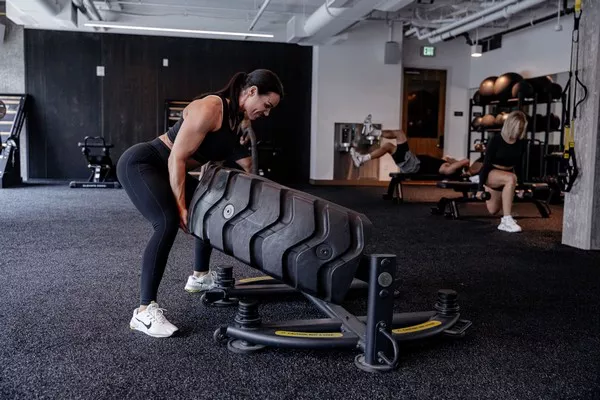Welcoming a new baby into the world is one of life’s most joyful experiences. Alongside this joy, many new mothers face physical and emotional challenges as their bodies recover from pregnancy and childbirth. Postpartum fitness plays a crucial role in helping new moms regain strength, boost energy, and improve overall well-being. However, beginning an exercise routine after giving birth requires careful planning, patience, and awareness of the body’s needs. This article provides a comprehensive guide to postpartum fitness, helping new moms navigate this important phase safely and effectively.
Postpartum fitness is about more than just losing “baby weight.” It is a journey of healing and strengthening the body, improving posture, and restoring confidence. The process must respect the unique changes and demands placed on a woman’s body during pregnancy and childbirth. With the right approach, exercise can reduce common postpartum discomforts such as back pain and fatigue, improve mood, and help new mothers feel empowered as they adjust to life with their newborn.
Why Is Postpartum Fitness Important for New Mothers?
Postpartum fitness offers numerous physical and mental benefits. After childbirth, a woman’s body undergoes significant changes, including weakened muscles, hormonal shifts, and altered posture. Exercise helps to rebuild muscle strength, especially in the core and pelvic floor, which are often stretched or weakened during pregnancy. This rebuilding improves stability, reduces back pain, and supports everyday activities like lifting and carrying a baby.
Mental health is another crucial aspect. Postpartum exercise releases endorphins, natural mood boosters that help reduce stress and combat symptoms of postpartum depression and anxiety. Engaging in fitness also provides new moms with a sense of control and accomplishment during a time of major life changes. Overall, postpartum fitness supports a balanced recovery and promotes long-term health.
When Is the Right Time to Start Postpartum Exercise?
Knowing when to begin exercising after childbirth depends on the individual and the type of delivery. For most women who had a vaginal delivery without complications, gentle movement and light walking can start within a few days after birth. However, formal exercise routines are usually recommended to begin around six weeks postpartum, once cleared by a healthcare provider.
For those who experienced a cesarean section or complications, recovery may take longer. Listening to the body and receiving medical approval is essential before starting any fitness regimen. Pushing too hard or too soon can lead to injury or setbacks. Starting slowly with low-impact activities helps build a foundation without overtaxing the body.
What Are the Key Components of a Postpartum Fitness Plan?
A well-rounded postpartum fitness plan focuses on rebuilding strength, improving cardiovascular health, and enhancing flexibility. Core exercises that target the deep abdominal muscles and pelvic floor are especially important. These muscles support the spine and pelvic organs and help prevent issues like incontinence.
Cardiovascular exercise, such as walking or swimming, improves heart health and increases energy levels. Flexibility exercises like gentle stretching or yoga promote relaxation and help relieve muscle tension caused by carrying and breastfeeding the baby. Balance and posture exercises aid in correcting alignment changes from pregnancy. Combining these elements creates a balanced approach to recovery.
How Can New Moms Strengthen Their Core Safely?
Strengthening the core after childbirth requires careful attention to avoid strain. The core includes not just the abs but also the pelvic floor, diaphragm, and back muscles. Many women experience diastasis recti, a separation of the abdominal muscles, during pregnancy. Exercises must be chosen to gently reconnect these muscles without increasing pressure on the abdomen.
Starting with pelvic tilts, bridges, and modified planks can help engage the core safely. Avoid crunches or sit-ups initially, as these may worsen muscle separation. A physical therapist specializing in postpartum care can provide personalized guidance. Consistency and patience are key, as core strength improves gradually.
What Role Does Pelvic Floor Fitness Play Postpartum?
The pelvic floor muscles support the bladder, uterus, and bowel. Pregnancy and childbirth stretch and sometimes weaken these muscles, leading to problems like leakage or pelvic discomfort. Pelvic floor exercises, commonly known as Kegels, are essential in postpartum fitness to restore muscle tone and control.
Kegels involve contracting and relaxing the pelvic muscles repeatedly. Performing them correctly can reduce symptoms of pelvic floor dysfunction and improve sexual health. Incorporating pelvic floor work into daily routines is simple and effective. For severe cases, consulting a pelvic floor specialist ensures proper technique and recovery.
How Can Cardiovascular Exercise Benefit Postpartum Recovery?
Cardiovascular exercise increases heart rate, promotes circulation, and boosts endurance. For new mothers, activities like walking, swimming, or cycling can increase energy and help with weight management. Starting with gentle, low-impact cardio is advisable to accommodate the body’s healing process.
Regular cardio also supports mental health by releasing mood-enhancing chemicals. It provides a break from caregiving demands and can be a social activity when done with friends or family. As fitness improves, intensity and duration can be gradually increased. This approach helps new moms regain stamina safely.
What Are Safe and Effective Flexibility Exercises Postpartum?
Flexibility is often overlooked but is vital for postpartum recovery. Stretching helps alleviate muscle tightness caused by changes in posture, breastfeeding positions, and carrying the baby. Gentle yoga or stretching routines improve circulation, reduce tension, and promote relaxation.
Focus on areas prone to tightness, such as the hips, lower back, and shoulders. Avoid overstretching or sudden movements that could cause injury. Consistent stretching also supports better posture, which is important for preventing long-term discomfort. Mindful breathing during stretches enhances relaxation and body awareness.
How Can Nutrition Support Postpartum Fitness?
Good nutrition fuels recovery and supports the increased demands of breastfeeding and exercise. A balanced diet rich in protein, healthy fats, and a variety of fruits and vegetables provides the nutrients necessary for muscle repair and energy. Staying hydrated is especially important for milk production and overall health.
Many new mothers experience increased hunger or fatigue. Planning meals and snacks that include wholesome, nutrient-dense foods helps maintain energy levels. Consulting a healthcare provider or nutritionist can tailor dietary needs based on individual circumstances. Nutrition and fitness together accelerate postpartum recovery.
What Are Common Challenges in Postpartum Fitness and How to Overcome Them?
New mothers often face obstacles like fatigue, time constraints, and emotional stress when trying to maintain fitness. Sleep deprivation and constant caregiving make scheduling workouts difficult. It’s important to set realistic expectations and be flexible with your routine.
Breaking workouts into shorter sessions or combining exercise with baby care, such as stroller walks, can help. Seeking support from family or joining postpartum fitness groups provides motivation and accountability. Listening to your body and prioritizing rest ensures safe progress. Remember, every small effort counts toward long-term health.
When Should New Moms Seek Professional Guidance?
Professional guidance can be invaluable in postpartum fitness. Physical therapists, fitness trainers specializing in postpartum care, and pelvic floor specialists can design safe and effective programs. They help identify issues such as diastasis recti or pelvic floor dysfunction that need targeted attention.
If you experience pain, heavy bleeding, dizziness, or other unusual symptoms during exercise, stop and consult a healthcare provider. Personalized advice ensures that your fitness plan supports healing and avoids setbacks. Partnering with experts gives confidence and peace of mind as you rebuild strength.
Postpartum fitness is a vital part of a new mother’s recovery journey. It helps restore strength, improve mood, and increase energy, enabling women to enjoy motherhood fully. By understanding when to start, focusing on core and pelvic floor health, incorporating cardio and flexibility exercises, and overcoming common challenges with patience and support, new moms can safely and effectively regain their fitness. Embrace this period with compassion for your body and celebrate each step forward. Your postpartum fitness journey is not just about exercise—it’s about rediscovering your strength and well-being for the life ahead.
Related Topics

































